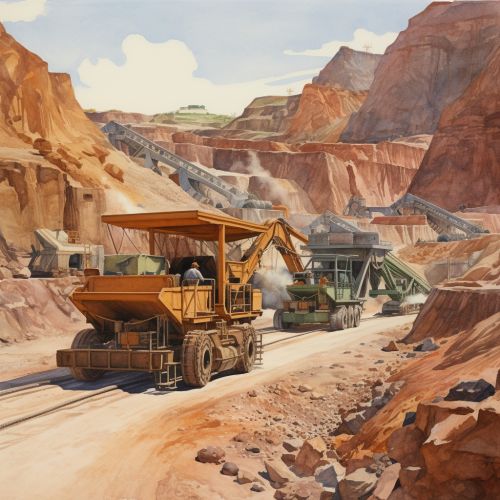Copper production in the United States
History
Copper mining in the United States has been a major industry since the rise of the northern Michigan copper district in the 1840s. In 2017, the United States produced 1.27 million metric tonnes of copper, worth $8 billion, making it the world's fourth largest copper producer, after Chile, China, and Peru. Copper was produced from 23 mines in the US. Top copper producing states are Arizona, Utah, New Mexico, Nevada, and Montana. About 99% of domestic production comes from 20 mines.
Production
Copper production in the United States is primarily extracted from sulfide ores, and to a lesser extent, from oxide ores. The sulfide ores are typically processed by pyrometallurgical methods, while the oxide ores are generally treated by hydrometallurgical techniques.


The first step in the production process is the extraction of copper ore from the earth. This is done through either open pit or underground mining. Open pit mining is the most commonly used method in the United States. The ore is crushed and ground, and then subjected to flotation, a process that separates the copper minerals from the remaining material.
The copper concentrate obtained from flotation is then sent to a smelter, where it is heated to high temperatures in the presence of oxygen. This process, known as smelting, results in a molten copper sulfide known as matte copper. The matte copper is then converted into blister copper through a process known as converting. The blister copper is further refined through electrorefining to produce high purity copper.
Economic Impact
Copper production in the United States has significant economic implications. The industry directly employs approximately 10,000 workers, with a further 50,000 jobs indirectly created by the industry. The total direct and indirect economic impact of copper production in the United States is estimated to be over $10 billion annually.
In addition to its economic impact, copper production also has significant environmental implications. The extraction and processing of copper ore can result in the release of harmful substances into the environment, such as sulfur dioxide and heavy metals. These environmental impacts are managed through a combination of regulation, technology, and best management practices.
Future Outlook
The future of copper production in the United States is uncertain. While the demand for copper is expected to remain strong due to its use in a wide range of industries, including construction, electronics, and transportation, the supply of copper ore in the United States is limited. This has led to increased exploration for new copper deposits, as well as efforts to improve the efficiency of existing mining operations.
